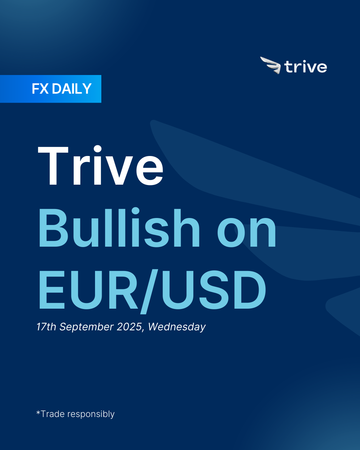FX Daily: Trive Bearish on USD/JPY

The yen staged a sharp comeback as stronger wage data and a disastrous US jobs report drove US yields lower and narrowed differentials, pulling USD/JPY back below 148. Early BoJ caution and political noise had pressured the yen, but the shift in US data overwhelmed. With Fed cuts priced and Japan showing early wage traction, we turn bearish USD/JPY, favoring selling rallies while US yields stay under pressure.
JPY: Buy in dips
The Japanese Yen saw a dramatic reversal over the week, beginning as one of the weakest performers before staging a powerful comeback fueled by US data shocks and easing trade tensions. The week opened with heavy selling pressure, as dovish-leaning comments from the Bank of Japan and growing political instability within the ruling LDP party drove USD/JPY sharply higher, pushing it through 148.00 and 149.00 to reach the week’s peak. Mid-week, sentiment began to shift on reports that the US and Japan were finalizing a deal to reduce auto tariffs. The turnaround accelerated on Friday, first with stronger-than-expected Japanese wage data, and then decisively after the disastrous US Non-Farm Payrolls report. The collapse in US yields and the dollar sent USD/JPY plunging back below 148.00, closing out a volatile week that moved from domestic weakness to externally driven strength.
Japanese economic data added support to the Yen late in the week. Labor Cash Earnings for July came in hotter than expected, showing the fastest pace of growth in seven months. More importantly, Real Cash Earnings rose for the first time in seven months, giving the Bank of Japan a hawkish impulse and reinforcing Yen strength. The main driver, however, was Friday’s weak US jobs report. The dismal headline figure caused a sharp drop in US Treasury yields, drastically narrowing the US-Japan yield gap and triggering a sell-off in USD/JPY.
Central bank commentary played a key role in the Yen’s early weakness. Deputy Governor Himino weighed on the currency with remarks that, while acknowledging the appropriateness of continued rate hikes, emphasized uncertainties around the global economy and trade policy. Markets read his lack of urgency as a signal the BoJ was in no hurry to tighten, which pressured the Yen. Governor Ueda’s midweek comments added little new information, simply reiterating that the BoJ would raise rates if economic and price conditions met forecasts, leaving markets largely unmoved.
Trade developments provided relief. The week started on a sour note when Japan’s trade negotiator postponed a planned US trip over disputes, but sentiment improved sharply on Thursday with reports that Washington and Tokyo were finalizing a deal to reduce tariffs on Japanese auto imports. On Friday, the White House confirmed that President Trump had signed an executive order to implement the agreement, removing a key source of uncertainty that had been weighing on Japanese assets.
Near term we are neutral. Softer US front end yields support the yen against the dollar, while a tentative risk on tone and firmer commodities can lift high beta crosses, so the forces offset. Domestically wages and services inflation help but the BoJ remains gradual, which limits directional impulse. We plan to trade the range by buying yen on dips versus the dollar when US two year yields soften and by selling yen against the commodity bloc only when credit and oil are firm, keeping risk small until a run of confirming wage and inflation prints appears. The stance turns weak bullish if Tokyo core services CPI and cash earnings stay firm while US two year yields hold lower, and weak bearish if US CPI reaccelerates and two year yields rebound alongside stronger credit and commodities. If the driver mix flips meaningfully or if policy guidance shifts more dovishly than expected, we will reconsider and lean toward a weaker yen until the data and pricing improve.
Longer term, we stay weak bullish. Japan’s status as a creditor with a current account surplus and the yen’s role as a funding currency keep it sensitive to differentials, so gradual compression alongside steadier domestic wages and services inflation still points to a slow grind stronger over time. The stance would improve if wage gains persist alongside firmer core services prices and tighter Japanese front end pricing, and would fade if those trends slip or if global yields re steepen in favor of carry.
If the driver mix flips meaningfully or if policy guidance shifts more dovishly than expected, we will reconsider and lean toward a weaker yen until the data and pricing improve.
USD: 25bp cut is fully priced in
The US Dollar ended the week sharply lower, driven by a consistent and intensifying narrative of a cooling labor market in the United States. The DXY started the week on mixed ground, finding some support from a global risk-off move caused by surging bond yields. However, the focus quickly shifted to domestic economic conditions. A series of weak labor market reports, beginning with Wednesday’s disappointing JOLTS data and followed by Thursday’s surprisingly low ADP employment figures, set a bearish tone. This narrative culminated on Friday with a disastrous August Non-Farm Payrolls report. The headline figure of only 22k jobs shattered expectations, confirmed a rapid slowdown in hiring, and pushed the dollar to a weekly low below 97.55. This outcome led to a significant dovish repricing of Federal Reserve expectations, with markets aggressively pricing in multiple rate cuts by the end of the year, capping a week where recession fears firmly took hold.
The dollar’s sell-off was primarily driven by collapsing labor market data. It began with July JOLTS Job Openings, which fell to 7.181 million compared to the expected 7.378 million. The August ADP National Employment report then showed just 54k jobs added against 65k expected, while weekly initial jobless claims rose to 237k. The main event came on Friday with the August Non-Farm Payrolls, which confirmed the market’s worst fears. Payrolls grew by only 22k compared to the expected 75k, and prior months were revised down by a net 21k. The unemployment rate rose to 4.3% as forecasted, and average hourly earnings increased 3.7% year-on-year, in line with expectations. Importantly, payroll growth has now been below the estimated breakeven rate in three of the last four months.
Other economic data added to the pressure. The ISM Manufacturing PMI remained in contraction at 48.7, while the ISM Services PMI beat expectations at 52.0, showing resilience in services. However, the employment sub-component of the services report remained weak at 46.5, aligning with the broader labor market slowdown. The July international trade deficit widened sharply to -$78.3 billion, hinting at a potential drag on third-quarter GDP, while revised second-quarter unit labor costs came in softer than expected at 1.0%, which was viewed as dovish for inflation.
Federal Reserve officials also signaled a shift in tone. Governor Waller said the Fed should cut rates at the next meeting and suggested around 150 basis points of cuts would be needed to reach a neutral policy stance. Musalem noted he had marked up labor market risks and marked down inflation risks, while New York Fed President Williams acknowledged the Fed’s focus had tilted more towards its employment mandate. Markets aggressively repriced Fed expectations following the weak payrolls, fully pricing in a 25 basis point cut for the September 17 meeting. By the end of the week, markets were pricing around 70 basis points of total easing by year-end, implying a high probability of three cuts in 2025. Adding to the uncertainty, reports emerged that the Justice Department had opened a criminal investigation into Fed Governor Cook regarding mortgage fraud, creating another layer of political risk for the central bank.
In trade and geopolitics, a US Appeals Court ruled that the majority of President Trump’s tariffs were illegal. Although the tariffs remain in place pending a Supreme Court appeal, the ruling creates long-term fiscal uncertainty as it raises the possibility of refunding collected duties. President Trump also signed an executive order lowering tariffs on Japanese auto imports, easing tensions with Japan. Meanwhile, the US Commerce Department revoked TSMC’s waiver for shipments of chip supplies to China, escalating the ongoing technology rivalry.
Market sentiment shifted notably during the week. It began with global risk aversion, sparked by surging bond yields, including UK 30-year yields hitting a 27-year high. Initially, the dollar benefited from safe-haven flows, but once the weak US data took center stage, the narrative shifted to a US-specific slowdown. Friday’s disastrous jobs report cemented this shift, removing doubts and reinforcing the view that the labor market is deteriorating rapidly. This triggered a broad move across markets, with bond yields and the dollar falling sharply while rate cut expectations surged.
Near term, we hold a clear bearish US dollar stance and continue to sell strength, because a run of softer labor data that started with weaker job openings and ADP, moved through higher jobless claims, and ended with a very small payroll gain has pushed the Fed’s focus toward employment and made a September cut feel like the base case rather than a debate, which in turn keeps front end yields heavy and makes any bounce in the dollar hard to sustain for long. The macro mix around that story still leans the same way, since manufacturing remains in contraction while services holds up but shows weak hiring, unit labor costs eased rather than accelerated, and the trade deficit widened in a way that argues for slower growth, so taken together the data and the Fed’s tone reinforce an easing path that favors fading dollar rallies rather than chasing them higher unless the next round of CPI, wage growth, or PMIs meaningfully challenges that view and shifts rate expectations back toward a firmer stance.
Longer term, we keep a gradual dollar softening bias as interest rate differentials compress and the idea of US outperformance cools, while trade and technology policy headlines add some inflation risk at the edges but tend to weigh more on growth and business confidence, which markets still translate into easier policy at the front and a steeper curve that usually caps the upside in the currency. That setup argues for sticking with a sell the rallies approach while acknowledging that headline risk around Fed governance and trade will keep day to day swings lively, so we stay flexible on timing and sizing but keep the core view that the dollar should drift lower over the coming months unless the inflation side of the mandate reasserts itself in a sustained way.
If a short run of firmer data steadies the labor picture just as growth outside the United States cools and the Fed hints at fewer cuts than priced, the dollar could find a floor, with rebounds that last longer and pullbacks that stay shallow.

Disclaimer
This material is provided for informational purposes only and does not constitute financial, investment, or other advice. The opinions expressed in this material are those of the author and do not necessarily reflect the views of Trive International. No opinion contained in this material constitutes a recommendation by Trive International or its author regarding any particular investment, transaction, or investment strategy. This material should not be relied upon in making any investment decision.
The information provided does not consider the individual investment objectives, financial situation, or needs of any specific investor. Investors should seek independent financial advice tailored to their individual circumstances before making any investment decisions. Trive International shall not be liable for any loss, damage, or injury arising directly or indirectly from the use of this information or from any action or decision taken as a result of using this material.
Trive International may or may not have a financial interest in the companies or securities mentioned. The value of investments may fluctuate, and investors may not get back the amount they originally invested. Past performance is not indicative of future results.
For more information about Trive International, please visit http://trive.com/int
Additional Information
Investing involves risk, including the potential loss of principal. Diversification and asset allocation strategies do not ensure a profit or guarantee against loss. The content in this material is subject to change without notice and may become outdated or inaccurate over time. Trive International does not undertake any obligation to update the information in this material.
By accessing this material, you acknowledge and agree to the terms of this disclaimer. If you do not agree with these terms, please refrain from using this information.
कोई टिप्पणी नहीं
Home
Trive
TriveHub





0 टिप्पणियाँ